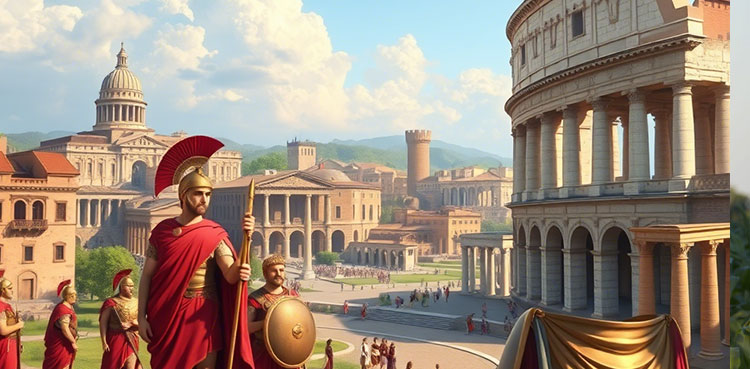The Roman Empire’s enduring legacy has profoundly impacted modern politics, architecture, law, and culture. Yet, its origins were remarkably modest. What sparked the transformation of this fledgling civilization into a dominant world power? Explore the fascinating story of Rome’s ascension to greatness.
Founded in 753 BCE as a small city-state on the banks of the Tiber River, Rome began as a monarchy before transitioning to a republic in 509 BCE. This early phase saw the development of democratic principles, with elected officials governing alongside a Senate. However, internal strife and power struggles eventually paved the way for Julius Caesar, whose assassination in 44 BCE set the stage for the transformation of Rome into an empire.
In 27 BCE, Octavian (later known as Augustus) became the first emperor, marking the official start of the Roman Empire. Under his rule, Rome entered a golden age of peace and prosperity known as the Pax Romana , which lasted over two centuries.
Expansion and Innovation: How Rome Conquered the World
At its height under Emperor Trajan (98–117 CE), the Roman Empire spanned three continents—Europe, North Africa, and Asia Minor—covering approximately 5 million square kilometers. Its military prowess was unmatched, thanks to disciplined legions, advanced engineering, and strategic alliances.
But Rome wasn’t just about conquest; it was also a hub of innovation. Aqueducts brought fresh water to cities, roads connected distant provinces, and monumental structures like the Colosseum showcased architectural brilliance. Roman law laid the foundation for many modern legal systems, while Latin influenced languages across Europe.
Trade flourished within the empire, spreading goods, ideas, and culture far beyond its borders. From olive oil to wine, Roman exports dominated markets, making the Mediterranean a “Roman lake.”
The Decline and Fall: Lessons from History
Despite its dominance, the Roman Empire faced challenges that led to its eventual collapse. Economic instability, political corruption, and social unrest weakened the state from within. Meanwhile, external pressures mounted as barbarian tribes invaded Roman territories.
One pivotal moment came in 410 CE when Visigoths sacked Rome—a shocking event that signaled the empire’s vulnerability. By 476 CE, the Western Roman Empire had fallen, though the Eastern half, known as the Byzantine Empire, survived until 1453.
Historians debate the exact causes of Rome’s decline, but key factors include:
- Overexpansion and administrative inefficiency
- Heavy reliance on slave labor
- Plagues and population decline
- Division between the wealthy elite and impoverished masses
Why the Roman Empire Still Matters Today
The Roman Empire may be ancient history, but its impact is timeless. Modern governments borrow elements of Roman governance, such as checks and balances and civic responsibility. Architects still admire Roman designs, and filmmakers continue to draw inspiration from epic tales of gladiators and emperors.
Understanding the successes and failures of the Roman Empire offers valuable insights into leadership, sustainability, and resilience. As we navigate our own complex world, the lessons of Rome remind us that even the mightiest empires are not immune to change.


Leave a Comment